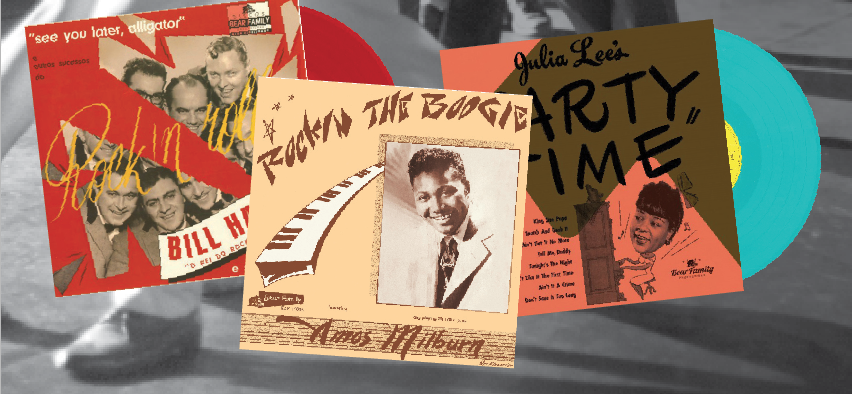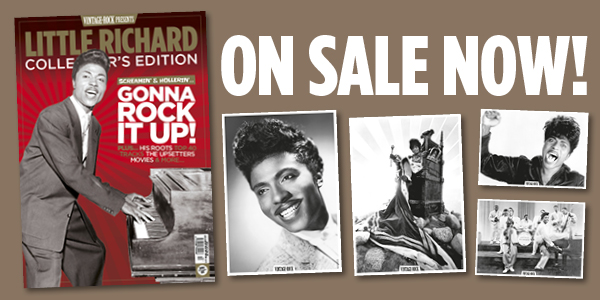We salute LaVern Baker, the feisty female R&B artist and Rock and Roll Hall of Famer who more than held her own with male contemporaries of the era… By Jack Watkins
About two minutes into Think Twice, her 1965 uptown soul duet with Jackie Wilson, LaVern Baker informs her partner: “I got news for you brother! They don’t make no more like me!” She could have said that again. Throughout her career, Baker’s gospel-inflected holler sounded like something from another age. The booming voice on more serious material could be overpowering.
So although some critics have written about her as if her talent was wasted on novelty material for Atlantic that, undoubtedly, stretched her so little that she could have sung it in her sleep, it was these apparently frivolous 50s rockers that showed her in the best light. Without ditching her abrasive tones, they brought out her cheeky sense of humour, or what the sleevenotes of her La Vern Baker (sic) album of 1957 called a “full-throated, vibrant belting with a sexy tease.”
Additionally, her Atlantic ballads drew some incredibly sensitive performances. Listening to a solid album of her shouting Bessie Smith covers is a bit much, as if you’ve mistakenly plugged your headphones into the vacuum cleaner. But Soul On Fire, her first Atlantic single, is one of the most moving songs the label ever released.
Baker already had at least a decade’s worth of experience singing secular music in public by the time she laid down that remarkable effort at her first Atlantic session in 1953. Born Delores Evans in Chicago in 1929, she had graduated from singing in a Baptist church choir, her extrovert’s love of performance leading her to seek out opportunities in the Windy City’s clubland while still underage. At 17, she was appearing at the Club DeLisa, Chicago’s version of the Cotton Club, in a patched-up sack dress and straw hat, under the rather demeaning name of Little Miss Sharecropper. The likes of Count Basie performed at the club, as did Fletcher Henderson.
Henderson had been around since the dawn of the jazz age. One of his 1920s bands had featured Louis Armstrong, and he’d written or arranged swing-era classics for Benny Goodman like Bumble Bee Stomp, I Never Knew and Wrappin’ It Up. He was so impressed when he caught Baker’s turn that he wrote a song for her, I’m In A Crying Mood. Baker recorded an unreleased version for Columbia around this time, but returned to it again at Atlantic where it was included on her 1956 album La Vern (sic). Billboard’s Paul Ackerman described her singing on this version of the song as containing “a touch of the ‘shout’ techniques of the greatest traditional blues artists.” It was a rather dated method by 1956, however, in spite of the searing power she generated from it.
Charlie Gillett, writing in Rolling Stone in 1972, reckoned that Diana Ross, Aretha Franklin and “especially” Tina Turner drew on Baker’s vocal style. But earlier than that, a less likely vocalist, Johnnie Ray had also learnt from her. By the end of the 40s, Baker was established at the Flame Show Bar in Detroit, a venue noted for its mixed clientele of Blacks and whites, drawn to see an array of almost exclusively Black artists, including Billie Holliday, Wynonie Harris and Dinah Washington.
An exception to this was Ray, still a raw country boy from Oregon on arrival in Detroit. Under the same management as Baker, he reputedly picked up much about the dramatics of emoting from her. Both recorded on Columbia’s Okeh imprint, Baker with future Motown talent coach Maurice King and his band, the Wolverines (as Bea Baker). But by the time she recorded with Todd Rhodes’ band for King Records in 1952, notably the torchy Trying, she had settled on the name LaVern Baker. A tour of Europe led to comparisons with another charismatic live performer, Pearl Bailey. With her slinky dresses, in Italy she was known as ‘the Countess’. It’s hardly surprising that when she rolled up at Atlantic, she was already sounding like a battle-hardened veteran.
The label had already enjoyed success with another big female R&B voice, Ruth Brown, and they must have been excited to bag Baker, because they assembled a classy team of session musicians for her first visit to their New York studio. The writing credit on Soul On Fire went to Baker and ‘Jermet’, which was shorthand for Atlantic boss Ahmet Ertegun and his A&R man Jerry Wexler. The tenor saxophonist was Freddie Mitchell, a distinguished jazzman who also played on Atlantic sessions by Joe Turner and Brown, and in Alan Freed’s Rock & Roll Orchestra.
Pianist Hank Jones had worked with everyone from Ella Fitzgerald and Billy Eckstine to Charlie Parker, and drummer Sylvester Payne was another jazzer with an impressive CV. Soul On Fire’s wonderfully measured beat and accompaniment, sedate but seductive, complemented Baker’s sultry, impassioned singing. To complete what was an almost perfect debut platter, the jumping flipside How Can You Leave A Man Like This?, a Baker-Wexler collaboration, was an early rock’n’roll-R&B hybrid, a bellowing Baker pulling out all the stops.
Incredibly, Soul On Fire failed to register with record buyers. Undeterred, the follow-up Tomorrow Night was in the same vein, but this time its up-tempo disc partner Tweedle Dee was placed on the A-side. Tweedle Dee was more obviously aimed at the pop market with a Latin beat, backing vocals by the Gliders – the in-house Atlantic vocal group given different names and personnel depending on which artists they were assigned to sing behind – and a few nonsense lines including Baker’s throaty exclamation “hompy-om-bom-bom!” The sax break was by Sam ‘The Man’ Taylor. The singer not only had a big R&B hit on her hands, but it crossed over to the Top 20 on the pop charts and might have been even bigger had not Mercury rushed out a milk-and-water cover by Georgia Gibbs. This so riled the fiery Baker that much that she filed an – unsuccessful – lawsuit against Gibbs.
Still, she was on a roll now. A pairing of That’s All I Need and Bop-Ting-A-Ling in early 1955 was so successful both sides made the Top 10 of the R&B charts. The former had a big brassy vocal from Baker and lively backing vocals from the Gliders. Baker had a high profile by this time, featuring in the Alan Freed Show at the Brooklyn Paramount, along with premier vocal groups like The Moonglows, The Clovers and The Penguins, and on The Ed Sullivan Show with Bo Diddley. DownBeat magazine made her its Female Personality Of The Year, the first time the jazz-oriented publication had given the award to a rock’n’roll performer.
Her biggest hit was still ahead. The sparky Jim Dandy, novelty rock at its best, was so infectious it gave her a first R&B chart topper, and reached No.17 on the US pop listings in 1956. Gibbs had another go at covering it, but with less success this time. There were national tours with Chuck Berry and Fats Domino. Ebony magazine ran a five-page feature on what it called “The Tweedle Dee Girl”. She appeared in the Alan Freed films Rock, Rock, Rock! and Mr Rock And Roll in 1957. They were the usual generic 50s rock rubbish, but in the latter Baker sung Humpty Dumpty Heart with her usual cheeky charm and verve, making for one of the best segments in the movie.
Her rumbustious style fell from favour as the 50s came to an end, though she still had a few bullets to fire for the new decade. While a duet with Ben E King – How Often/A Help-Each-Other Romance – was a mismatch of styles, Saved, written for her by Jerry Leiber and Mike Stoller as a Salvation Army marching band-style send up, was socked out with undiminished gusto. A young Phil Spector was on guitar. Voodoo Voodoo featured King Curtis, who’d played sax on earlier Baker hits I Cried A Tear and I Waited Too Long, the latter penned by up-and-coming songwriting team Neil Sedaka and Howard Greenfield. See See Rider was a decent update of an old song.
Too bracing to be classed as a soul singer, there would be various comebacks, and she was so tough that when diabetes cost her both her legs near the end of her life she continued appearing on stage, singing from a wheelchair. She died in 1997, six years after being inducted into the Rock and Roll Hall of Fame.






